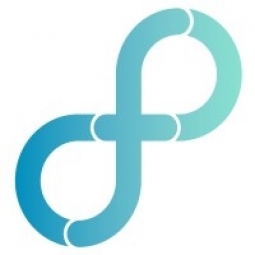Technology Category
- Infrastructure as a Service (IaaS) - Private Cloud
- Platform as a Service (PaaS) - Application Development Platforms
Applicable Industries
- Education
Applicable Functions
- Product Research & Development
Use Cases
- Personnel Tracking & Monitoring
- Time Sensitive Networking
Services
- Training
About The Customer
Aijob is a private company co-funded by Innovation Norway, the country’s most important instrument for the development of Norwegian enterprises and industry. Aijob’s mission is to assist the Norwegian Labor and Welfare Administration, along with the 200 counseling agencies it funds, to place unemployed citizens into private- and public-sector jobs. Aijob manages worker profiles in a central Eightfold-powered database, which is accessible by counseling agencies, government employers, and businesses in the private sector. Workers create their profiles, including formal work experience as well as interests, hobbies, and volunteer experience that may be relevant to job opportunities.
The Challenge
Norway is grappling with the challenge of reducing the cost of its welfare system, which annually incurs billions of kroner in benefits for over 100,000 citizens. The country is also striving to improve the efficiency of reintegrating people into the workforce. Many job seekers, especially those who have been unemployed for a long time, struggle to align their skills with the evolving demands of a dynamic job market. These individuals often find it difficult to bridge the gap between their skills and the needs of a modern workplace. Traditional resume processing methods are slow and ineffective at matching these individuals to suitable jobs, which discourages unemployed individuals from seeking new employment.
The Solution
Aijob, a private company co-funded by Innovation Norway, selected the Eightfold Talent Intelligence Platform after evaluating hundreds of tools and considering the development of its own software. The platform was chosen for its ability to match the right person to the right opportunity, identify skills gaps and training requirements, and assess each individual’s potential to succeed in a given job. The Talent Intelligence Platform offered the innovative approach needed to analyze job seekers and job requirements in a new way. It could surface more potential matches between available workers and jobs, and provide the insights and strategies needed to transition jobless citizens back into the workforce. The platform's ease of use was a major consideration for Aijob. It was found to be very intuitive for job-placement agency counselors, workers, and hiring managers. Mobile access and user interface localization further enhanced the user experience.
Operational Impact

Case Study missing?
Start adding your own!
Register with your work email and create a new case study profile for your business.
Related Case Studies.

Case Study
Revolutionizing Medical Training in India: GSL Smart Lab and the LAP Mentor
The GSL SMART Lab, a collective effort of the GSL College of Medicine and the GSL College of Nursing and Health Science, was facing a challenge in providing superior training to healthcare professionals. As clinical medicine was becoming more focused on patient safety and quality of care, the need for medical simulation to bridge the educational gap between the classroom and the clinical environment was becoming increasingly apparent. Dr. Sandeep Ganni, the director of the GSL SMART Lab, envisioned a world-class surgical and medical training center where physicians and healthcare professionals could learn skills through simulation training. He was looking for different simulators for different specialties to provide both basic and advanced simulation training. For laparoscopic surgery, he was interested in a high fidelity simulator that could provide basic surgical and suturing skills training for international accreditation as well as specific hands-on training in complex laparoscopic procedures for practicing physicians in India.

Case Study
IoT platform Enables Safety Solutions for U.S. School Districts
Designed to alert drivers when schoolchildren are present, especially in low-visibility conditions, school-zone flasher signals are typically updated manually at each school. The switching is based on the school calendar and manually changed when an unexpected early dismissal occurs, as in the case of a weather-event altering the normal schedule. The process to reprogram the flashers requires a significant effort by school district personnel to implement due to the large number of warning flashers installed across an entire school district.

Case Study
Implementing Robotic Surgery Training Simulator for Enhanced Surgical Proficiency
Fundacio Puigvert, a leading European medical center specializing in Urology, Nephrology, and Andrology, faced a significant challenge in training its surgical residents. The institution recognized the need for a more standardized and comprehensive training curriculum, particularly in the area of robotic surgery. The challenge was underscored by two independent studies showing that less than 5% of residents in Italian and German residency programs could perform major or complex procedures by the end of their residency. The institution sought to establish a virtual reality simulation lab that would include endourological, laparoscopic, and robotic platforms. However, they needed a simulator that could replicate both the hardware and software of the robotic Da Vinci console used in the operating room, without being connected to the actual physical console. They also required a system that could provide both basic and advanced simulation training, and a metrics system to assess the proficiency of the trainees before they performed surgical procedures in the operating theater.

Case Study
Edinburgh Napier University streamlines long-distance learning with Cisco WebEX
• Geographically dispersed campus made in-person meetings costly and inconvenient.• Distance-learning programs in Malaysia, India, and China required dependable, user-friendly online tools to maximize interaction in collaborative workspaces.• Virtual learning environment required a separate sign-in process, resulting in a significant administrative burden for IT staff and limited adoption of collaboration technology.

Case Study
8x increased productivity with VKS
Before VKS, a teacher would spend a lot of time showing a group of 22 students how to build a set of stairs within a semester of 120 hours. Along with not leaving the teacher much time to provide one-on-one support for each student to properly learn carpentry, it also left a considerable amount of room for error. Key information would be misinterpreted or lost as the class was taught in the typical show-and-tell way.

Case Study
Scalable IoT Empowering GreenFlex's Sustainable Growth
GreenFlex, a company that supports sustainable development, decarbonization, and energy efficiency, faced several challenges in its quest to expand its business. The company needed to deploy a robust and sustainable IoT technology to support its growth. It was crucial for them to monitor and control devices at customer sites in a safe and reliable manner. They also needed to integrate devices across a range of communication protocols and gather and act on data to meet efficiency targets. GreenFlex had previously built IoT capabilities into its digital platform, GreenFlexIQ, to monitor and manage customer sites remotely. However, they soon realized that they needed a new platform to support their ambitions. They needed a platform that could scale to connect more devices for production management and make it easier for the operations team to manage devices in the field.







